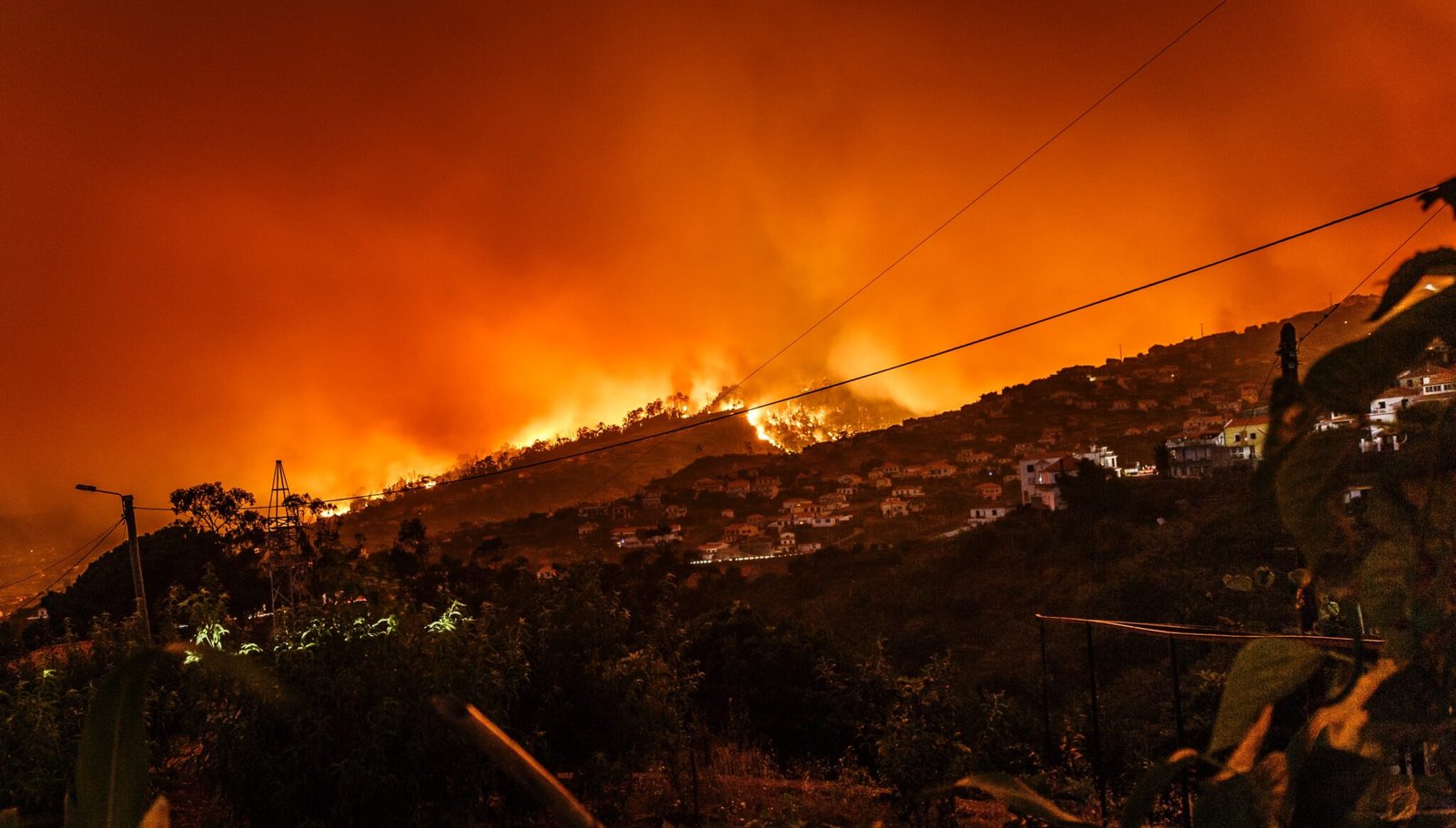Wildfires, the infernos that burn through wild landscapes, can speed up very quickly and, if they go unhampered, may result in substantial catastrophic losses to the environment, wildlife, and climate. Moreover, they cause human deaths and migrations/displacements, ultimately impacting the economy. Wildfires can be forest, bush, and peatland fires depending upon the type of landscape affected.
Three components, also known as the Fire Triangle, cause wildfires to occur. Which includes a heat source, fuel, and oxygen. The Sun, a hot bolt of lightning, or a smoldering matchstick can cause enough heat to spark an untamed wildfire. But what’s more disturbing is the fact that about 90 % of wildfires are caused by human activities. They are regularly witnessed in the Western United States, where favorable conditions like high temperatures, droughts, and frequent lightning create a perfect setting for wildfires.
Here is a list of the world’s most devastating wildfires:
The Peshtigo Fire (October 8, 1871)
Often considered one of the deadliest and history’s most fatal wildfires. It was ignited in a vast forest and resulted in an estimated 1500 to 2500 deaths in Peshtigo, Wisconsin, U.S. Moreover, this fire was massively catastrophic as it caused the loss of around 1.2 million acres of land, setting ablaze homes, destroying fields poor people. The cause behind it was identified to be small fires whipped by high winds in dry conditions.

The Cloquet Fire October
The devastating Minnesota U.S fire (12, 1918) ignited and hit hard the Cloquet town; it affected Moose lake and Kettle river in a forest nearby. The reason behind this wildfire was small sparks on local railroads mixed with dry conditions. It resulted in 450 deaths, 38 communities were lost, and 250,000 acres of land were destroyed.
The 2018 Camp Fire, California
Considered to be the deadliest and destructive wildfire in California’s history On November 8, 2018, an untamed fire erupted in Butte County fierce enough to burn 153,336 acres. The most expensive natural disaster of 2018 in terms of insured losses. It destroyed nearly 19,000 homes, burning 62,053 ha acres of area and killing at least 85 people. The reason behind ignition was an electrical transmission fire from electrical transmitting company PG&E power line.

The 2017 Tubbs Fire, California
The Tubbs fire is the deadliest in Northern California history. It started on October 8, 2017, and ended on October 31, 2017, burned more than 36,800 acres, and destroyed 5,643 structures in Sonoma and Napa counties. It is reported that around 22 people lost their lives. The cause for the wildfire was the failure of a private electrical system.
One of California’s most destructive wildfires devastated a neighborhood north of Santa Rosa in October 2017. Credit Kent Porter/The Press Democrat, via Associated Press
The 2004 Alaska Fire
The 2004 Alaska Fire season is the worst on record in terms of areas burned by wildfires in the U.S State of Alaska. More than 6.6 million acres of land were burned by 701 fires, 215 of which were caused by lightning strikes, 426 outsets by humans. Fortunately resulting in no human fatalities, but the impacts on climate were severe. Moreover, the 2004 Alaska fire had a significant effect on the air quality of Alaska.

Global Impact & Climate Change
Globally, the adverse effects of climate change are causing the average wildfire season to be three and a half months longer than what it was a few decades earlier. Also, the number of wildfires in the West has tripled. A more extended fire season means increased consequences, i.e., burning twice as many acres.
Holistically, wildfires are a contributing factor to greenhouse gas emissions and are responsible for poor air quality, resulting in 5-8% of the 3.3 million annual premature deaths attributed to poor air quality. Wildfires render people suffering from unsafe air quality, which is pronouncedly influenced by smoke.
In 2015 Indonesia’s wildfire spiked greenhouse gas emissions to the same scale as Brazil’s total annual emissions. The smoke caused people to have respiratory illnesses. When temperatures get warmer than average, moisture is drawn out of the plants and onto the land. This desiccation creates “tinderbox conditions,” which are favorable for spreading fire quickly over large areas if a fire is lit up.
Wildfires are also one of the leading contributing factors in wiping out endangered species. For instance, the U.S fires have wiped out half of Washington’s pygmy rabbit population. Wildfires and other associated climatic changes occurred during the 2018 northern hemisphere heatwave, where we saw the all-time temperature records were broken across Europe, North America, and Asia.
Contributing factors for wildfires include global warming and climate change. The most apparent link-up is with rising air temperatures. Our planet has been heating up nearly continuously since the start of the Industrial Revolution in the late 1800s, when humans started burning massive quantities of fossil fuels, releasing carbon dioxide; that holds the ability of trapping heat in the atmosphere.
Wildfires contributing to climate change while heating up the planet steadily and continuously mess up with the seasonal rain and snow patterns. The hot drying-out season is stretching on the tail end.
One of the alarming trends that we witness is that Wildfires are killing large patches of conifers, 300,500, 1000 acre patches, and some even more prominent. An even bigger problem is when vast swathes of forest burn, they cannot self-regenerate.
The bottom line is climate change has increased fire risks in both direct and indirect ways. When ignition occurs, even if it is natural, the chances of it spawning a big fire are much higher than they would be in the absence of present climatic conditions.
Also Read: How the Australian wildfires are affecting the Koalas

Rizwan Ali Shah is a management graduate, sports enthusiast, and freelance writer. He can be reached on: shahrizwan348@gmail.com

